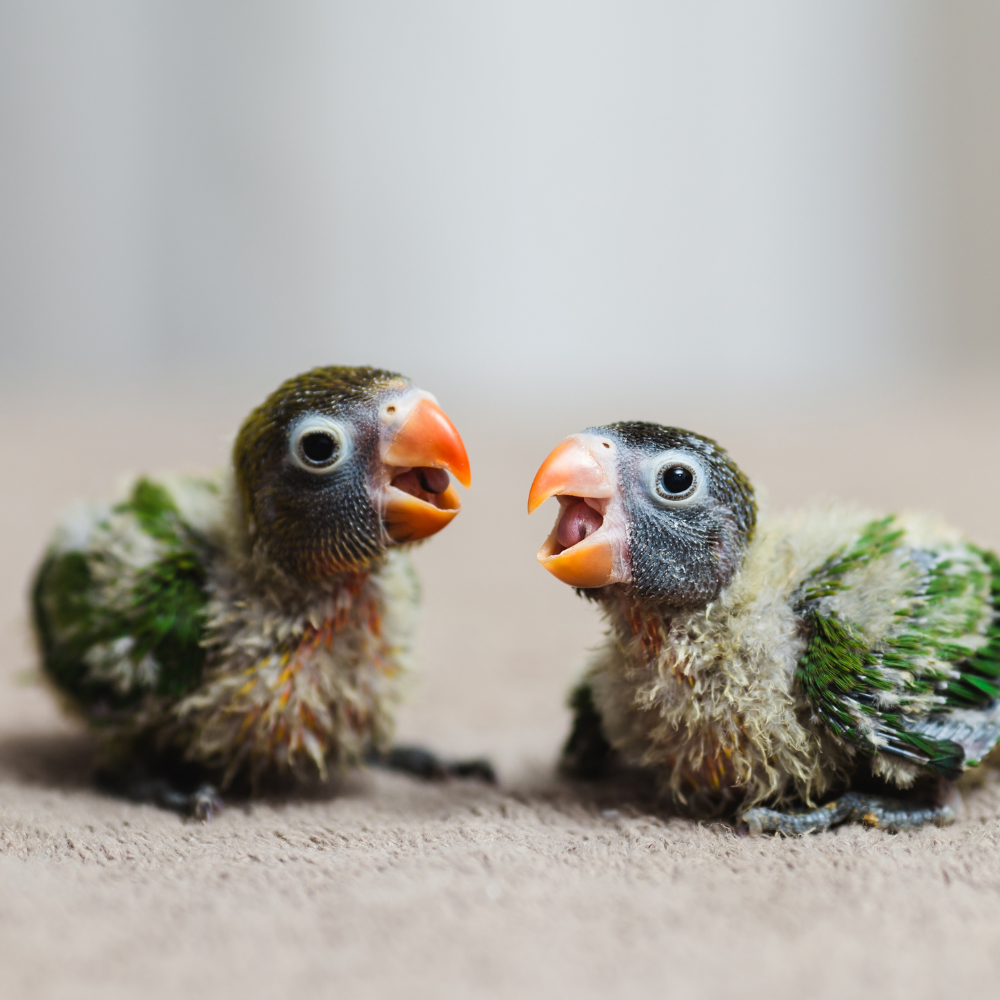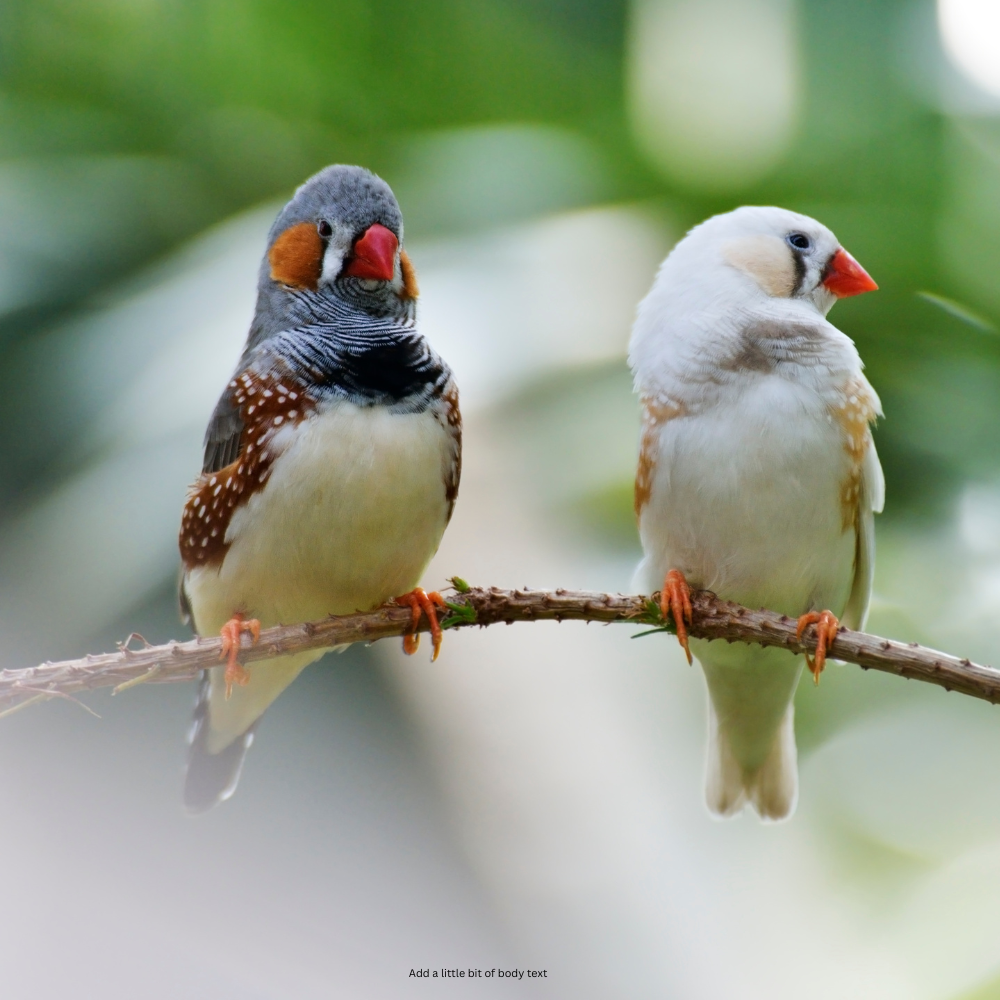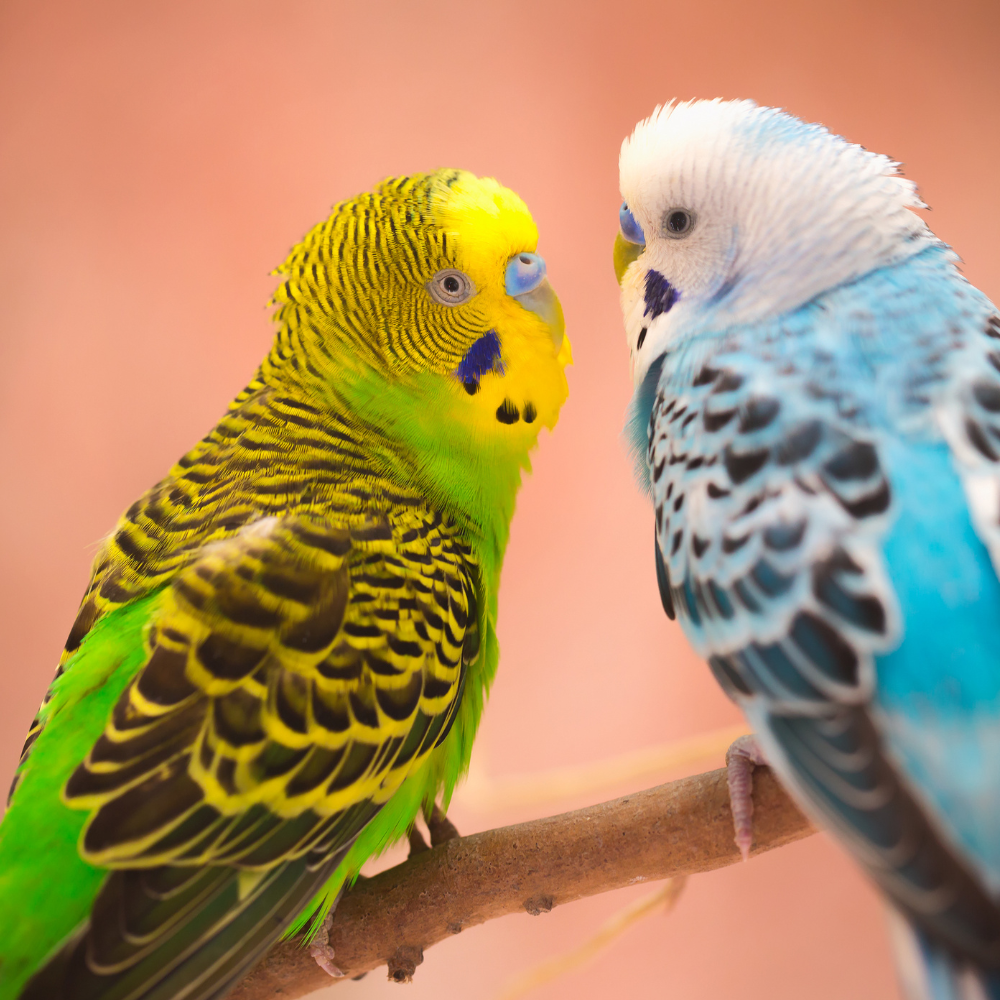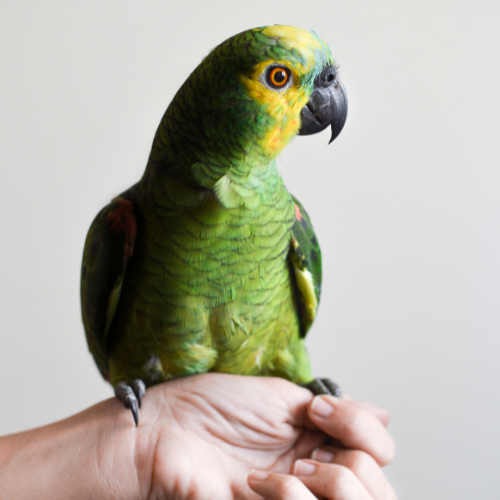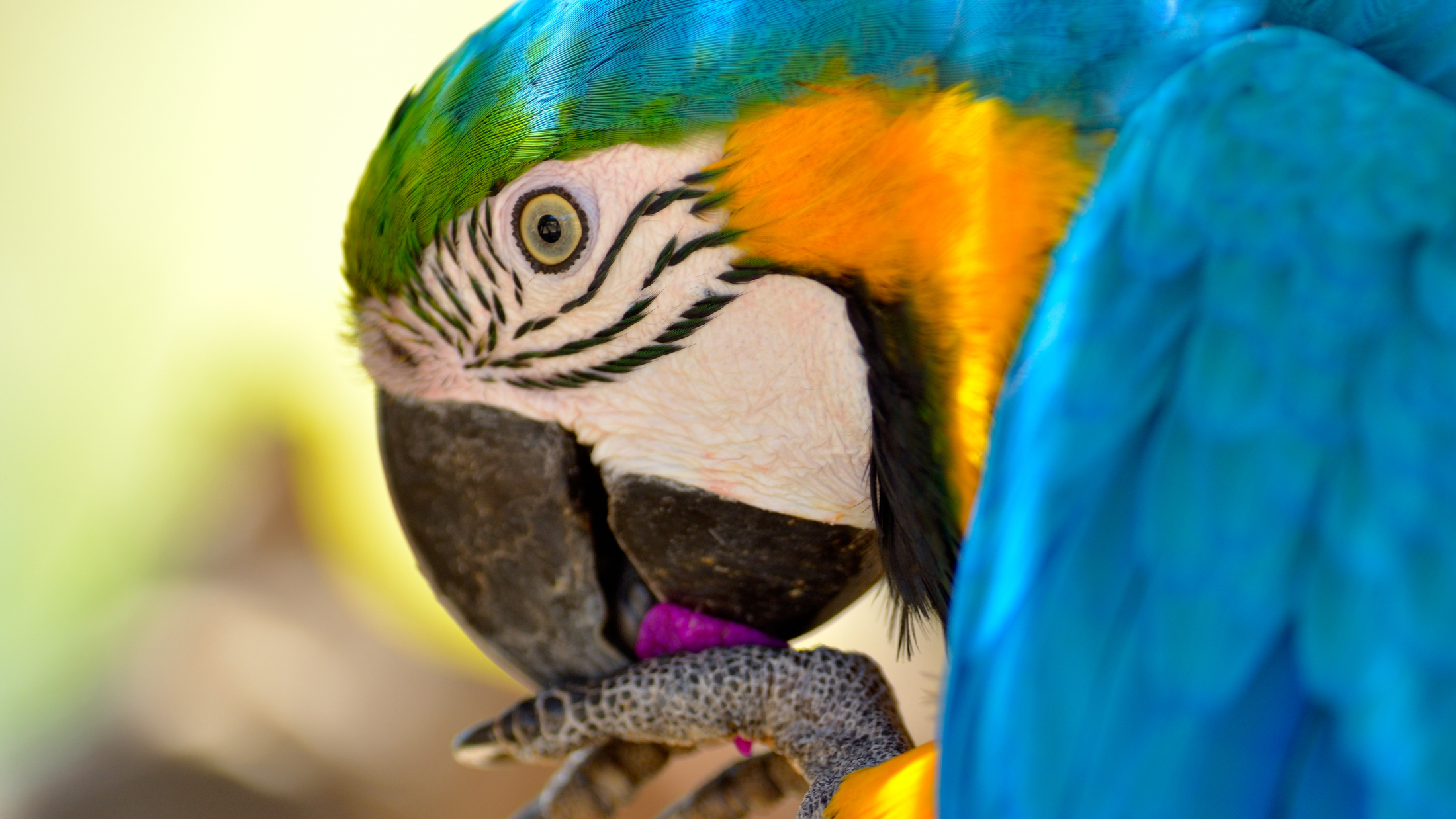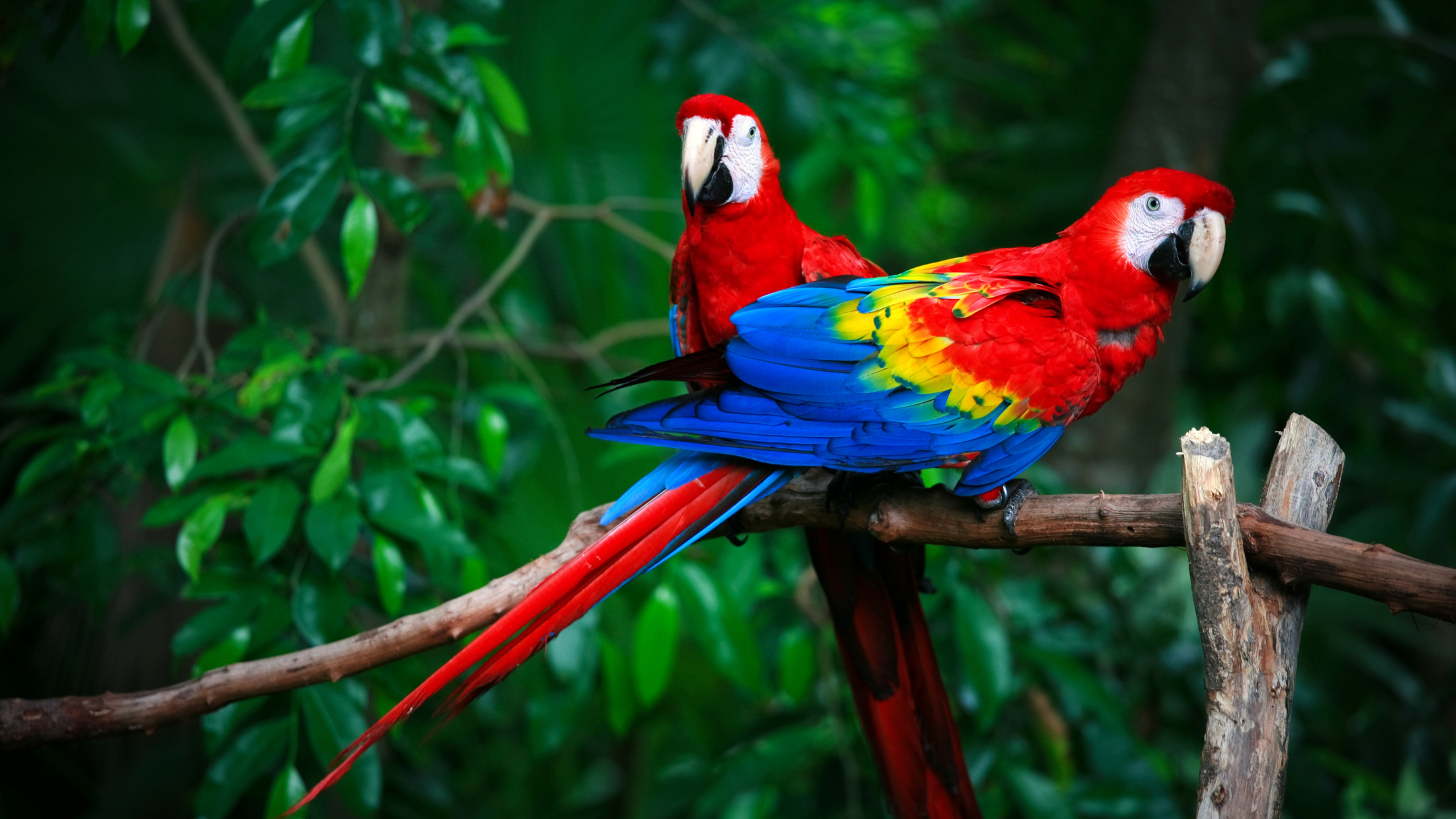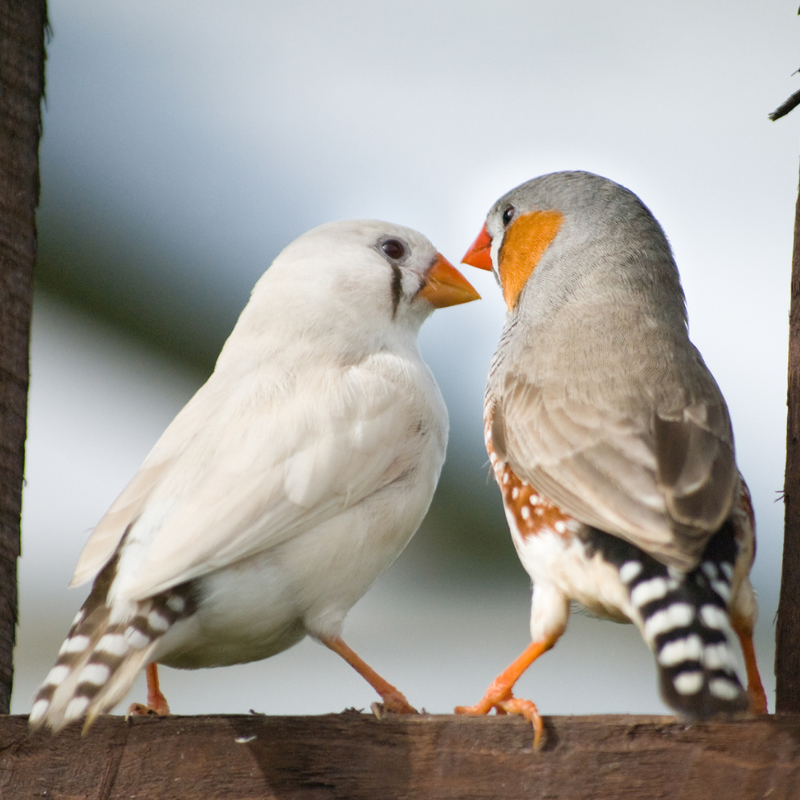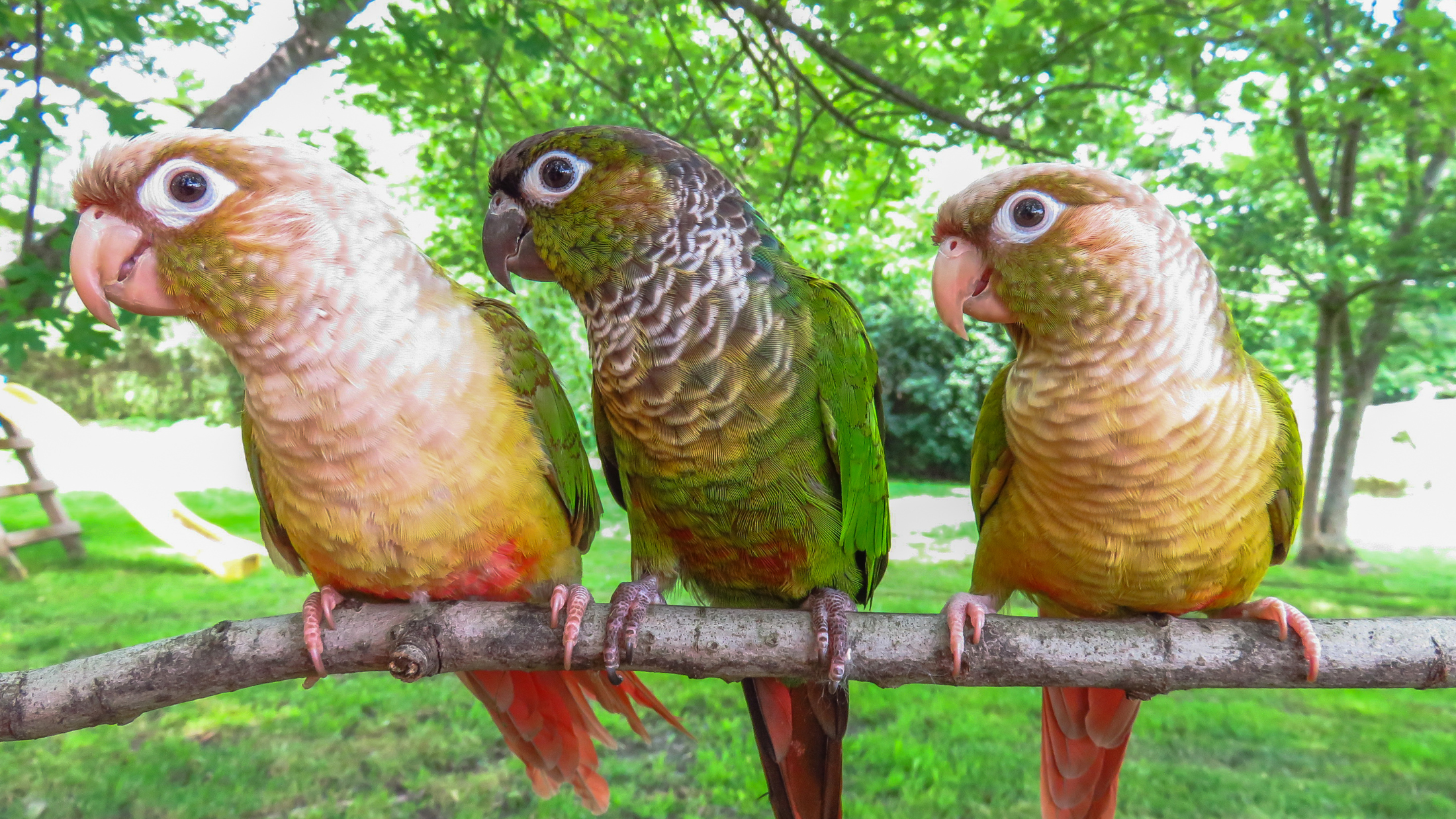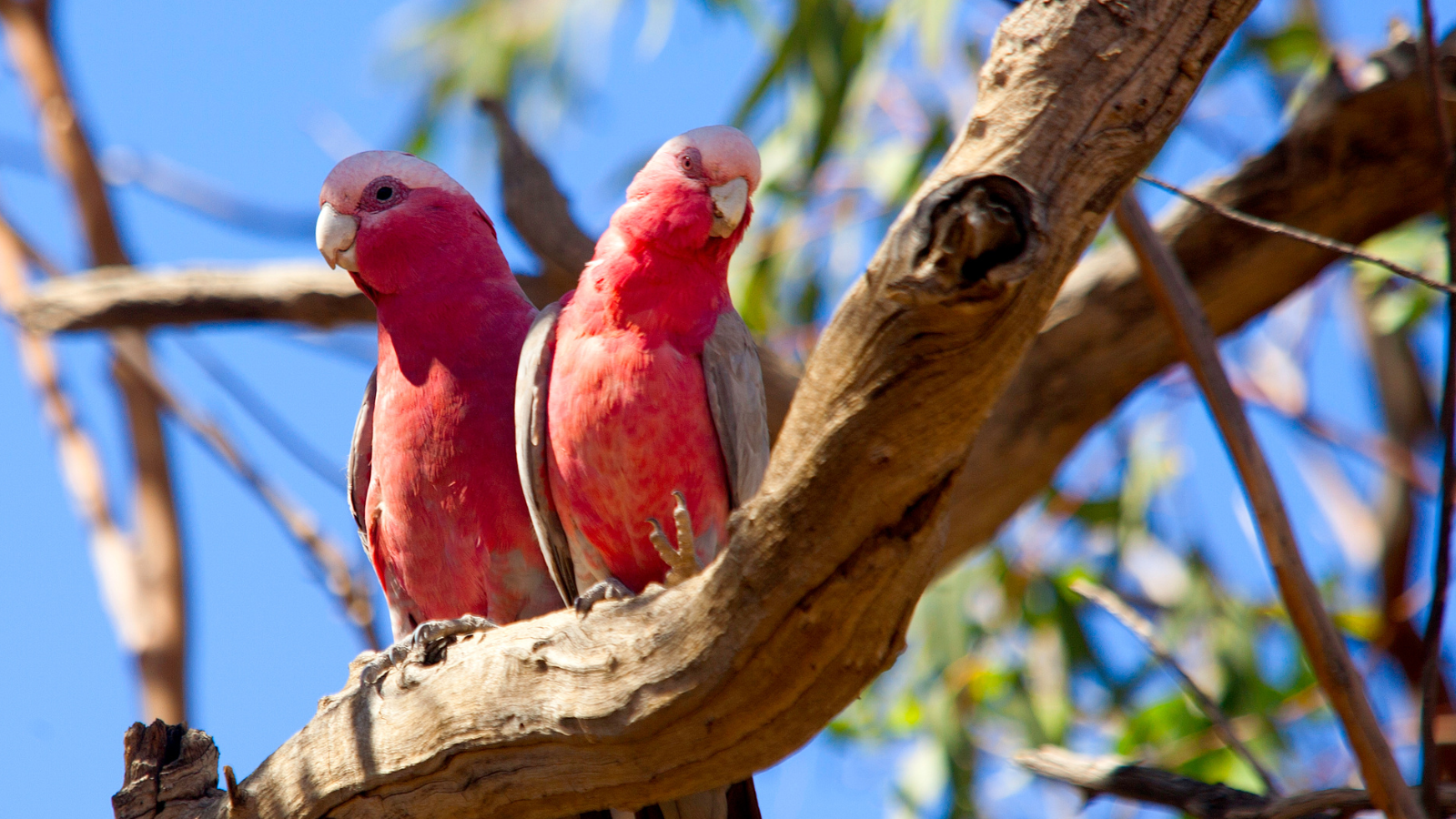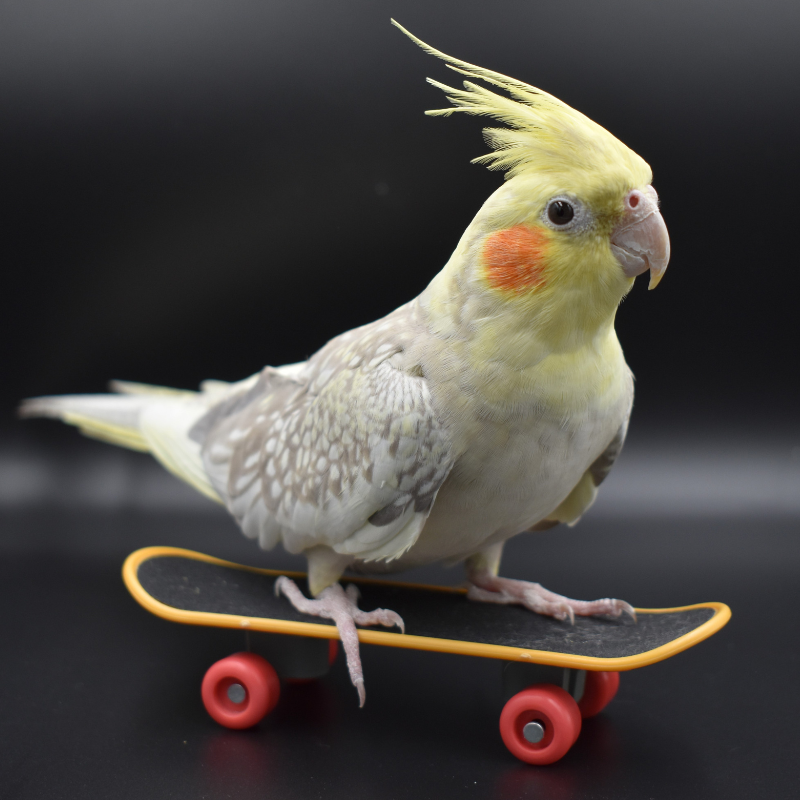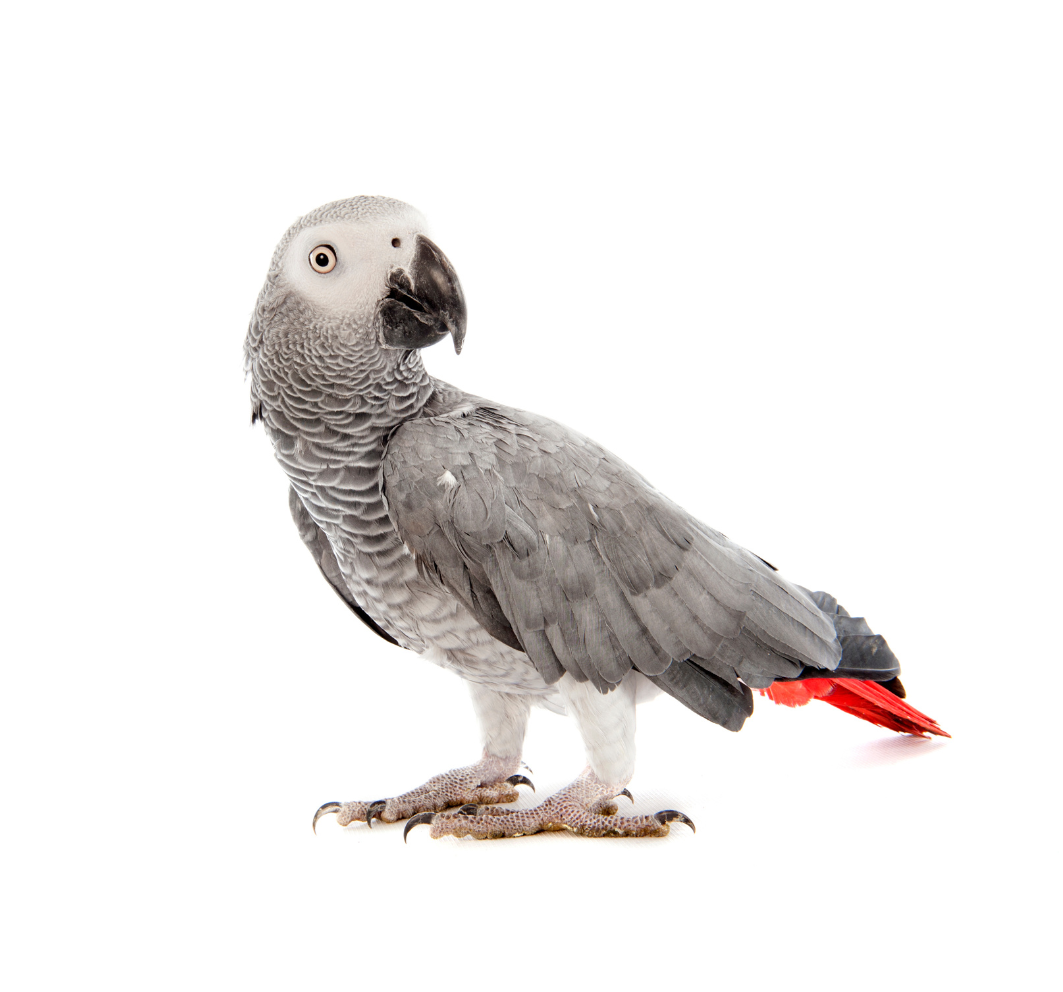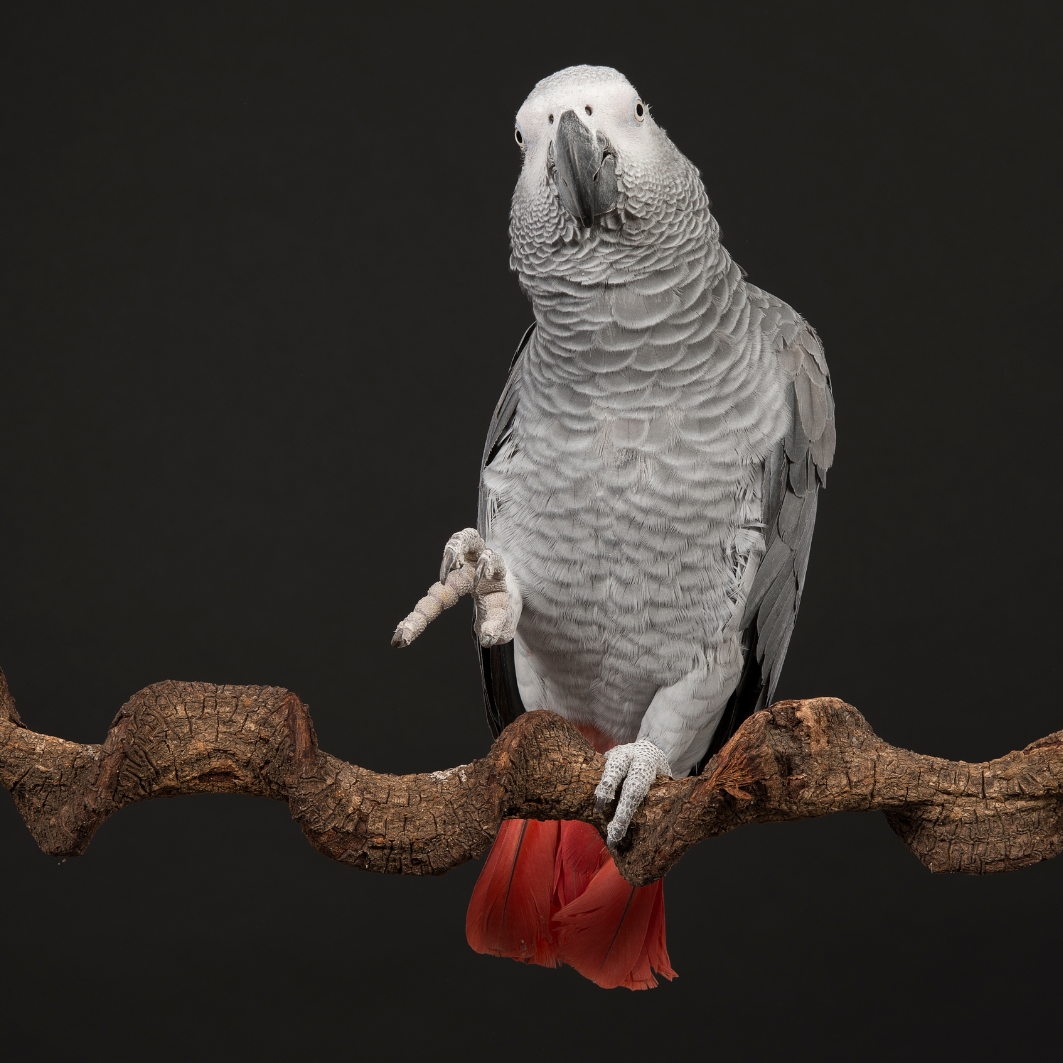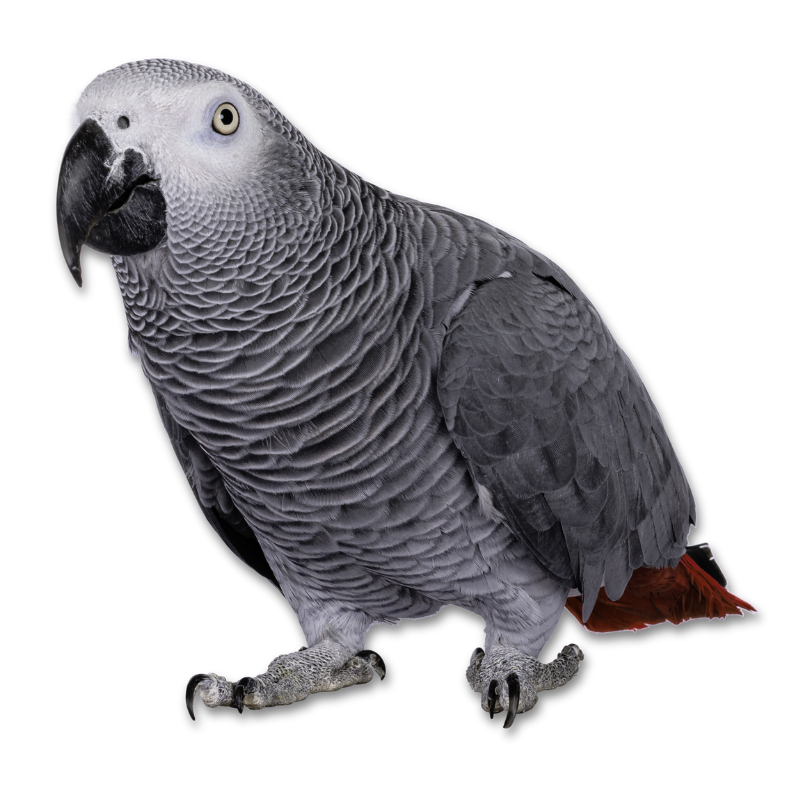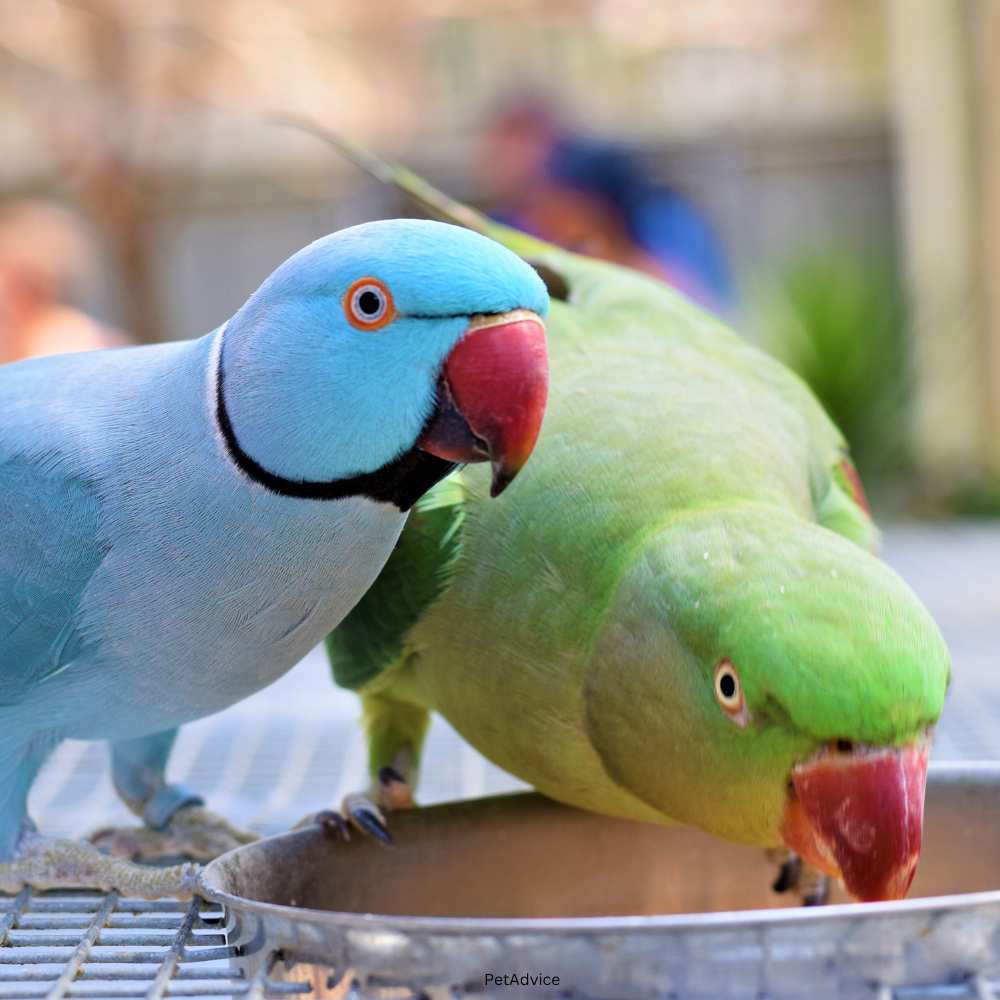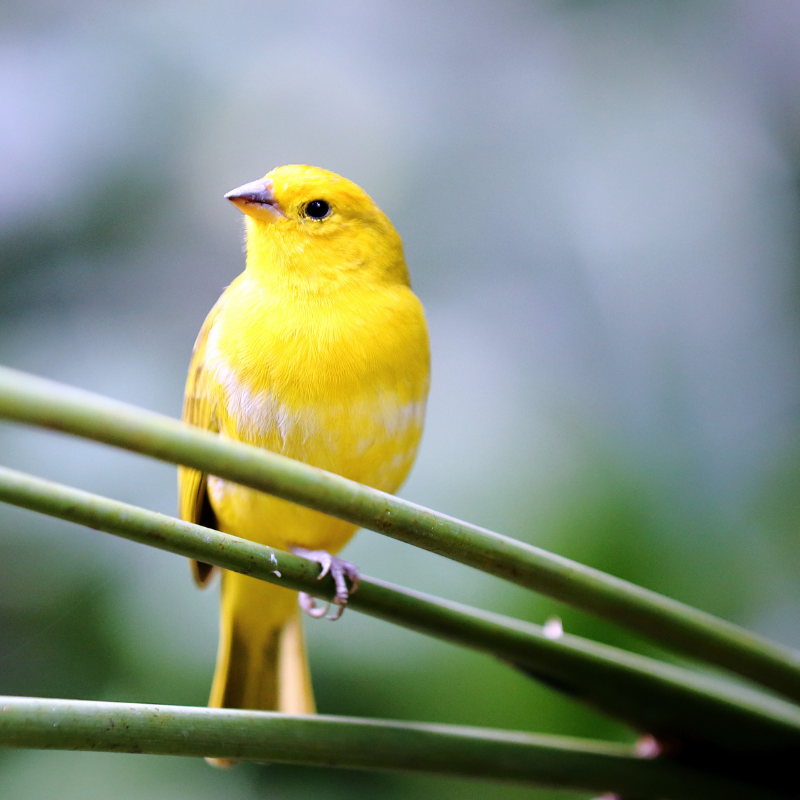Explore the Vibrant World of Birds
Discover the Diverse Species from Macaws to Finches
Dive into the fascinating realm of birds, from the colorful Amazon Parrots to the intelligent African Gray Parrots.
Bird Varieties
Meet Our Feathered Friends
Our collection features a wide range of bird species, each with unique traits and habitats. From the playful Budgies and Finches to the majestic Macaws, and the sociable Conures to the charming Cockatiels, each bird brings a splash of color and a symphony of sounds to our world.

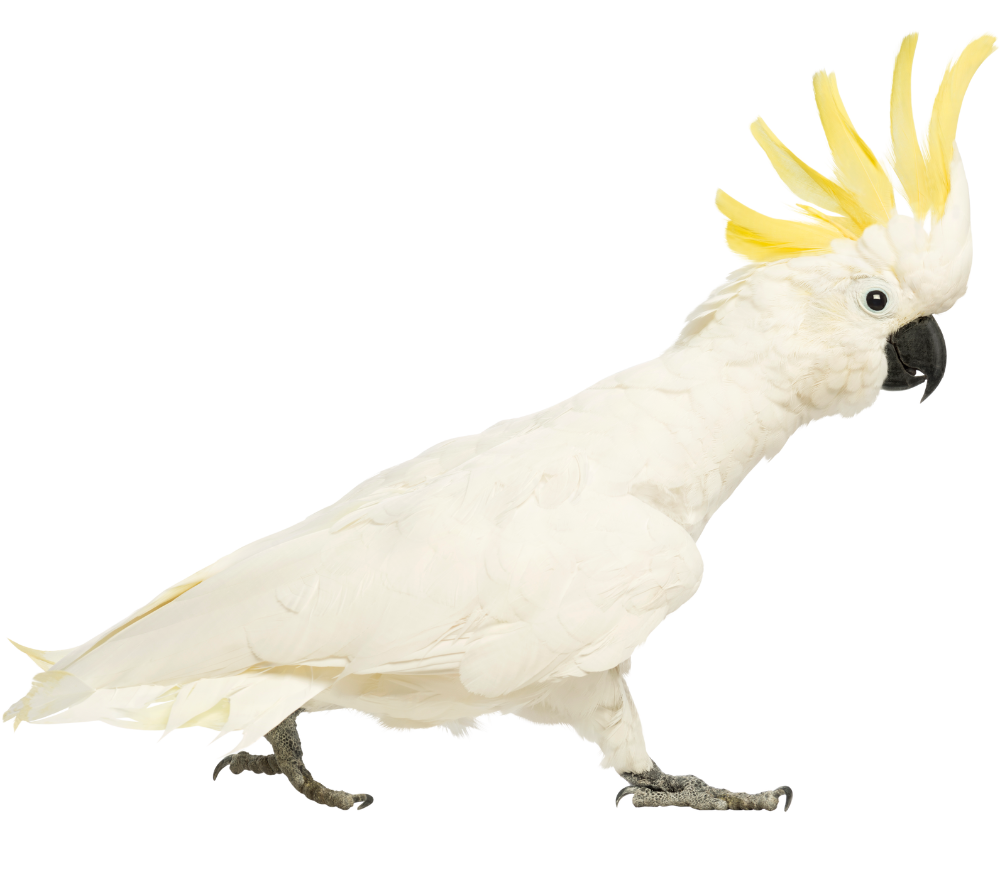
Not to forget the intelligent African Gray Parrots and the expressive Cockatoos, our aviary is a testament to the beauty and diversity of avian life. We also have a special section for Miscellaneous birds, showcasing rare and exotic species.
To learn more about pet birds and specialty products, please visit this Amazon product page. If you make a purchase we may earn a small commission.
Have a
Question?
Ask Butler!
Bottom Right
A Symphony of Colors and Sounds
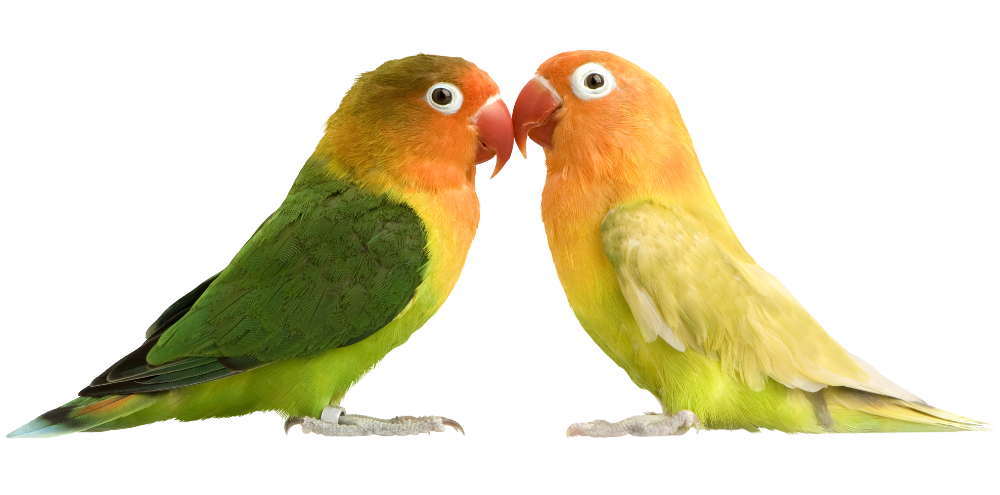

Bird Gallery
Captivating Images of Our Avian Stars
Discovering Amazon Parrots
Amazon Parrots: Vibrant and Vocal Companions
Amazon Parrots are renowned for their striking green plumage and their ability to mimic human speech, making them one of the most popular avian pets. Native to the New World ranging from South America to Mexico and the Caribbean, these birds thrive in rainforest environments where their colorful appearance blends perfectly with the lush foliage. Their diet in the wild consists predominantly of fruits, nuts, and seeds, although pet parrots often enjoy a varied diet that includes specially formulated pellets, vegetables, and occasional treats.
Caring for Amazon Parrots requires commitment as they are known for their social nature and intelligence. They need regular interaction and mental stimulation to prevent boredom and behavioral issues. Suitable habitats for these birds include large, sturdy cages equipped with perches, toys, and plenty of space for flying. It’s crucial to maintain a clean environment and a consistent routine to keep these parrots healthy and happy.
Amazon parrots can live will beyond 50 years making them the perfect lifetime companion.
A Lifetime of Companionship
What do Amazon parrots eat?
Amazon parrots thrive on a varied diet consisting of pellets, fruits, vegetables, nuts, and seeds. Ensure that fresh water is always available, and avoid feeding them avocado, chocolate, or caffeine, as these can be toxic to birds.
How long do Amazon parrots live?
Amazon parrots can live for 50 years or more with proper care, which includes a balanced diet, regular veterinary check-ups, and plenty of mental and physical stimulation.
What are the common health issues in Amazon parrots?
Common health issues include obesity, feather plucking, respiratory problems, and liver disease. A diet high in fat can lead to obesity, so it’s important to monitor their food intake and provide plenty of exercise.
Do Amazon parrots talk and how can you teach them?
Yes, Amazon parrots are known for their ability to mimic human speech and sounds. Teaching them involves repetition and positive reinforcement. Speak clearly and repeat words or phrases regularly, and reward them with treats or affection for attempts to mimic.
What type of habitat is ideal for an Amazon parrot?
Amazon parrots need a large cage that allows them to fly and move freely. Include perches of different sizes and materials to promote foot health, and provide toys and puzzles to keep them mentally stimulated. The cage should be placed in a part of the home where they can interact with the family, as they are very social creatures.
Exploring Macaws
Macaws: The Majestic Giants of the Bird World
Macaws are spectacularly colorful and are the largest birds in the parrot family, with some species boasting wingspans nearly as wide as a human is tall. These birds are native to Central and South America’s rainforests where they roost and breed in the canopies. Known for their striking coloration and impressive beaks, Macaws feed on a diet of seeds, fruits, nuts, and occasionally clay from riverbanks, which helps detoxify their systems.
What do Macaws eat?
Macaws require a balanced diet consisting of high-quality pellets, fresh fruits, vegetables, and nuts. Foods to avoid include avocado, chocolate, and caffeine, which are harmful to birds. It’s important to provide a variety of foods to keep them healthy and prevent boredom.
How long do macaws typically live?
Macaws have a long lifespan, often living 50 to 70 years, and sometimes even longer in captivity with proper care. This makes owning a macaw a long-term commitment that should be considered carefully.
What are the most common health issues for macaws?
Macaws are prone to several health issues, such as macaw wasting syndrome, psittacosis, feather plucking, and beak and feather disease. Regular veterinary check-ups and a well-maintained living environment can help prevent these issues.
Can macaws talk, and how can they be trained to speak?
Macaws are excellent mimics and can learn to speak words and phrases. Training involves consistent repetition and positive reinforcement. Use treats and praise to encourage your bird when it attempts to mimic sounds or words correctly.
What type of environment is best for a macaw?
A large, sturdy cage is necessary for a macaw, as they are large birds with strong beaks that can easily bend weak bars. The cage should include various perches and toys to encourage physical activity and mental stimulation. It’s also crucial to socialize with your macaw regularly and provide opportunities for interaction outside the cage, as they are highly social animals.
Understanding Budgies and Finches
Budgies and Finches: Small Birds with Big Personalities
Budgies (or Parakeets) and Finches are delightful small birds that are perfect for novice avian enthusiasts. Budgies, also known as parakeets, originate from Australia and are highly sociable, often thriving in pairs or small groups. Finches, found across various continents, are typically very active and are known for their charming chirps and vibrant colors. Both species require a diet rich in seeds and greens, and they benefit from cages that allow ample space for flying and exercise.
To learn more about pet birds and specialty products, please visit this Amazon product page
What should parakeets and finches eat?
Parakeets and finches thrive on a diet that includes a mix of seeds, pellets, and fresh fruits and vegetables. It’s essential to provide a variety of foods to ensure they receive all necessary nutrients. Fresh water should always be available. Avoid giving them avocado and chocolate, which are toxic to birds.
How long do parakeets and finches typically live?
Parakeets generally live between 7 to 14 years, while finches have a shorter lifespan, typically ranging from 5 to 10 years. The lifespan of both birds can vary depending on care, diet, and environmental conditions.
What are common health issues for parakeets and finches?
Common health problems for parakeets include respiratory infections, scaly face mites, and obesity. Finches may suffer from air sac mites, bacterial infections, and goiter due to iodine deficiency. Regular check-ups with an avian veterinarian can help catch and treat issues early.
Can parakeets and finches be trained?
While parakeets are known for their ability to learn tricks and mimic sounds, finches are generally not trainable in the same way. Parakeets can be taught to perform simple tricks and may mimic words and whistles, especially with consistent training and positive reinforcement.
What type of habitat is ideal for parakeets and finches?
Both parakeets and finches need a spacious cage that allows for flight and exercise. The cage should have horizontal bars for climbing, various perches of different materials and diameters, and safe toys to encourage play and mental stimulation. Position the cage in a safe, social area of your home away from drafts and direct sunlight.
Ask Butler!
Haven’t found the answer? Ask Butler!
Butler is our Ai assistant and loves to play fetch!
You’ll find Butler in the bottom right corner waiting and eager to get your answer.
Just click on the image to Ask Butler a question, and watch him zip right back with an answer!

Conures Overview
Understanding Conures
Sun conures (above) love social interaction, so be ready to provide plenty of love and attention. With a diet rich in fruits, vegetables, and specialized pellets, along with a spacious cage and mental stimulation, you can ensure these beautiful birds stay happy and healthy companions in your home.
Conures are vibrant, medium-sized parrots known for their sociable nature and striking colors. Native to South America, these birds thrive in both humid rainforests and dry savannas, adapting well to a variety of environments. When caring for Conures, it’s essential to provide a spacious cage, a diet rich in fruits, vegetables, and specialized pellets, and plenty of social interaction to keep them engaged and happy.
What do Conures eat?
Conures should be fed a balanced diet consisting of high-quality parrot pellets, a variety of fresh fruits and vegetables, and some seeds and nuts as treats. Ensure they have access to fresh water at all times, and avoid giving them avocado and chocolate, which are toxic to birds.
How long do Conures typically live?
Conures can live between 15 to 30 years depending on their species, health, and the quality of care they receive. This includes a proper diet, regular exercise, and periodic check-ups with an avian veterinarian.
What common health problems do Conures face?
Conures may suffer from feather plucking, which can be caused by stress, boredom, or dietary deficiencies. They are also at risk for psittacosis, a bacterial infection, and respiratory issues if not kept in well-ventilated areas.
Can Conures learn to speak, and how would you teach them?
Conures can learn to mimic sounds and some words, though they are generally not as clear as larger parrots. Regular interaction and repetition of words in a clear, enthusiastic tone can encourage them to speak. Rewarding them with treats and praise can also help reinforce their learning.
What kind of environment is best for a Conure?
A spacious cage that allows them room to fly and exercise is ideal for Conures. Include various types of perches to enhance foot health, and provide toys and activities to keep them engaged and mentally stimulated. It’s important to place their cage in a social area to help them feel part of the family, as Conures are very social birds.
Cockatoos Essentials
Caring for Cockatoos
Cockatoos are affectionate, intelligent birds characterized by their dramatic crest feathers and emotional sensitivity. They originate from Australia and Indonesia, inhabiting diverse regions from forests to mountains. Cockatoos require a committed caregiver, as they demand significant attention and mental stimulation. Their diet should include a variety of seeds, nuts, fruits, and vegetables, supplemented with high-quality pellets to ensure optimal health.
What do Cockatoos eat?
Cockatoos require a diet rich in various nutrients consisting of high-quality pellets, fresh fruits, vegetables, and occasional seeds or nuts. It’s crucial to avoid toxic foods such as avocado, chocolate, and caffeine, which can harm birds.
How long do Cockatoos live?
Cockatoos have a long lifespan, often living up to 40 to 70 years depending on the species. Proper care, including a balanced diet, regular veterinary care, and plenty of mental and physical stimulation, is essential for their longevity.
What are common health issues for Cockatoos?
Common health problems in cockatoos include obesity, feather plucking due to stress or boredom, and psittacine beak and feather disease. They may also develop respiratory issues if not housed in well-ventilated environments.
Can Cockatoos talk and how can you teach them?
Cockatoos are capable of mimicking human speech and sounds. The key to teaching them is consistency and patience; repeating words and phrases frequently and offering treats or praise as rewards when they mimic successfully can aid in their learning.
What type of habitat is ideal for a Cockatoo?
Cockatoos need a spacious cage that allows them to stretch their wings and move around freely. The cage should include perches of various sizes to maintain foot health and lots of engaging toys that cater to their need for mental stimulation. Since cockatoos are highly social birds, their cage should be located in a lively area of the house to keep them involved with family activities.
Cockatiels 101
Cockatiels, the smaller cousins of cockatoos, are popular pets due to their friendly and manageable size. They are native to the arid regions of Australia, thriving in a well-structured environment that mimics their natural habitat. Cockatiels benefit from a diet of seeds, pellets, and fresh greens, and require regular, gentle interaction with their owners to maintain their social and cheerful disposition.
Proper care for Cockatiels includes providing them with a spacious cage with plenty of toys that encourage foraging and problem-solving. Regular health check-ups with a vet experienced in avian care are crucial to ensure your Cockatiel remains healthy and vibrant throughout its life.
To learn more about pet birds and specialty products, please visit this Amazon product page.
What do Cockatiels eat?
Cockatiels thrive on a diet that includes specialized pellets, supplemented with fresh vegetables, fruits, and occasional seeds as treats. It’s crucial to avoid giving them avocado, chocolate, or caffeine, all of which are harmful to birds.
How long do Cockatiels live?
Cockatiels typically live between 15 to 20 years, though with excellent care, some can live even longer. Their lifespan can be extended with a balanced diet, regular veterinary care, and an enriched living environment.
What are common health issues for Cockatiels?
Cockatiels can suffer from respiratory infections, obesity, and nutritional deficiencies if their diet isn’t properly managed. They are also prone to feather plucking due to stress or boredom.
Can Cockatiels talk and how can you teach them?
Cockatiels are capable of mimicking sounds and simple words. Teaching them requires consistent repetition of the words or sounds you want them to learn, coupled with positive reinforcement like treats or affection when they make attempts to mimic.
What type of habitat is ideal for a Cockatiel?
Cockatiels need a cage large enough for them to fly and exercise comfortably. It should have various perch sizes to promote good foot health and include several toys and puzzles to keep them mentally stimulated. Placing their cage in a social area of the home helps fulfill their social needs, as they are interactive pets.
African Gray Parrots Overview
African Gray Parrots are renowned for their intelligence and ability to mimic human speech, making them one of the most popular avian pets. Originating from the dense forests of central Africa, these birds require a thoughtful approach to interaction and environmental enrichment.
Habitat and Living Conditions
In the wild, African Gray Parrots thrive in rainforests where they nest in high trees. For pets, a spacious cage and a controlled environment that mimics their natural habitat with plenty of branches for perching are essential for their well-being.
Care and Nutrition
Proper care for African Gray Parrots includes a diet rich in fruits, vegetables, and specialized pellets. Regular veterinary check-ups, mental stimulation, and social interaction are crucial to keep these intelligent birds healthy and happy.
What do African Grays eat?
African Grey Parrots should have a balanced diet consisting of high-quality pellets, fresh fruits, and vegetables, with nuts and seeds in moderation. It’s important to avoid feeding them avocado, chocolate, or caffeine, which can be toxic.
How long do African Grey Parrots live?
African Grey Parrots are known for their longevity, often living up to 60 years or more in captivity with proper care. This lifespan requires a commitment to proper nutrition, regular veterinary visits, and a stimulating environment.
What are common health issues in African Grey Parrots?
These parrots may suffer from psychological stress, including feather plucking and self-mutilation if they are not provided with adequate mental stimulation. Physically, they can develop calcium deficiencies and are susceptible to psittacine beak and feather disease.
Can African Grey Parrots talk and how can you teach them?
African Grey Parrots are exceptional at mimicking human speech. Teaching them involves consistent interaction, repeating words and phrases clearly, and providing rewards such as treats or affection to encourage repetition.
What type of habitat is ideal for an African Grey Parrot?
A large, sturdy cage is necessary for African Grey Parrots to ensure they have enough space to move and exercise. They benefit from a variety of perch sizes to maintain foot health and numerous toys and puzzles to keep their intelligent minds engaged. Placing the cage in a social area can help meet their need for interaction and prevent feelings of isolation.
Exploring Miscellaneous Birds
Characteristics and Care of Other Various Bird Species
Lorikeets – A Colorful Delight to Behold
Immerse yourself in the vibrant world of lorikeets, where a symphony of colors awaits. Native to Australia, these charming birds dazzle with their vibrant plumage, ranging from vivid reds and oranges to striking yellows and greens. With their playful and social nature, lorikeets make delightful companions. Their diet consists mainly of nectar, pollen, and fruits, providing a burst of natural sweetness. At My Blog, we celebrate the beauty and care of these colorful avian wonders, inviting you to explore their enchanting world.
Canaries
Canaries bring a burst of vibrant colors and melodious songs to your life. These charming birds are known for their beautiful plumage, ranging from vivid yellows to striking oranges and greens. With their playful and social nature, canaries make delightful companions. Their diet consists of a variety of seeds and fruits, providing them with the nutrients they need to thrive. At My Blog, we celebrate the care and joy that canaries bring, inviting you to explore their enchanting world. Join our bird lovers’ community today and embark on a journey filled with delightful encounters and captivating stories.
Still Haven't Found the Answer?
Ask Butler!
Butler is our Ai Powered helper in the bottom right corner.
Butler will fetch your answer in the blink of an eye.
Give Butler a try to find that perfect companion.

In our opinion, if you have large birds like amazons, macaws, cockatoos, etc, it is imperative that you allow the bird a safe environment inside and outside the cages. They are intelligent, resourceful, and very social. If you own a caged bird it is important that they have interaction with humans (and other birds if possible) to socialize and thrive. They will reward you with a lifetime of devotion and companionship.
Ideally all birds are best viewed in their native habitat and environment.
Have a Pet Health Question?
Ask our virtual vet – VET ON CALL. Click on GREEN ICON BOTTOM LEFT.
Not a substitute for a real vet. If your pet is sick or injured please contact a local vet.

Vet On Call
When you purchase through links on our site, we may earn an affiliate commission.
FAQ’s: ChatGPT.com | Content: ChatGPT, DiviAi and Author | Header Image: DiviAi | All other images: Canva.com | Site logo designed by author | Vet On Call and Butler Created by Author, powered by ChatGPT
Partner Sites Wordi Ask Me Bard Stir Discovr tweeted Deepfake Tattoo Chat Assistants Short Film Under Construction Pet Advice CEU’s Mecca
Ai Assistants: Go to ChatGPT.com. Enter the @ followed by name of bot Butler Vet On Call Ask Me 8 Stir Sum MY PY CEUQ My WP
Coming Soon PhysicianBurnout.com AiVanGogh.com MuhammadAi.com MisinformationAi.com FairyTaleGPT.com dot Rose Mo 请 (Qǐng)
Contact Us Email


